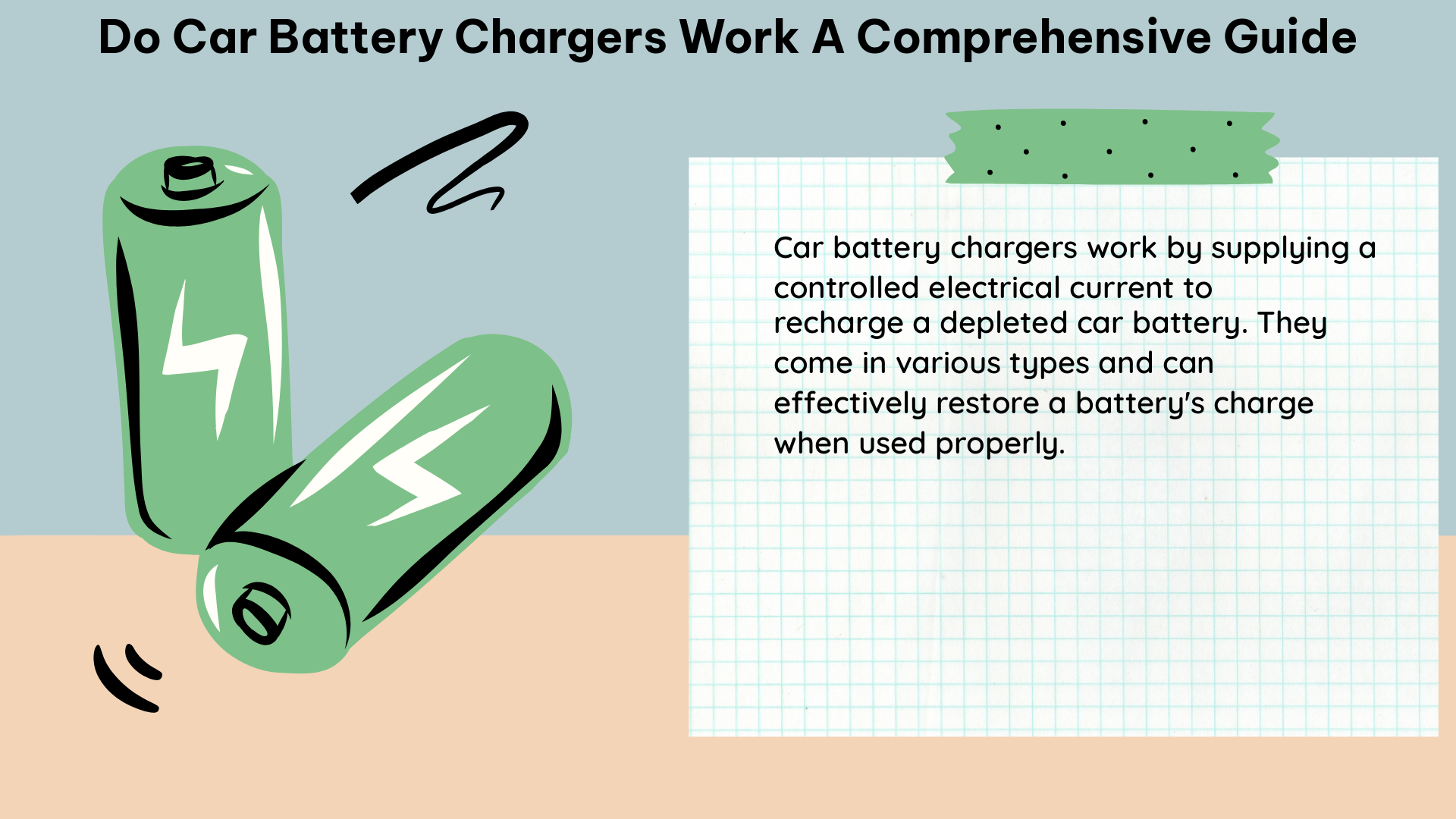Car battery chargers are essential tools for maintaining and recharging car batteries. They come in various types, each with unique features and specifications designed to cater to different charging needs. Understanding how these chargers work and their technical specifications is crucial in ensuring optimal battery performance and longevity.
Types of Car Battery Chargers
Trickle Chargers
Trickle chargers are maintenance chargers that can be left attached to a battery for a day or two out of the month. They deliver a constant, low current, typically ranging from 0.5 to 2 amps, to maintain the battery’s charge without the risk of overcharging. These chargers are ideal for vehicles that are not driven frequently, such as classic cars or seasonal vehicles, as they help prevent the battery from becoming fully discharged during periods of inactivity.
Smart Chargers
Smart chargers, also known as automatic chargers, can adjust their charging voltage and current based on the battery’s needs. They have sensors that monitor the battery’s voltage, current, and temperature, and can automatically switch between different charging modes to ensure the battery is charged safely and efficiently. Smart chargers typically have a charging current range of 2 to 10 amps and can charge a battery from 0% to 100% in a matter of hours, depending on the battery’s capacity and the charger’s output.
Solar Chargers
Solar chargers draw energy from the sun via solar panels and convert it into usable current to charge your batteries. These chargers are particularly useful for off-grid applications or vehicles that are stored outdoors for extended periods. However, solar chargers may result in overcharging, and a charge controller may be recommended for additional protection. Solar chargers typically have a charging current range of 1 to 5 amps, depending on the size and efficiency of the solar panels.
Technical Specifications of Car Battery Chargers

Charging Current (Amps)
The charging current, measured in amps (A), refers to the rate at which a charger delivers electrical current to a battery. A higher charging current will charge a battery faster, but it may also increase the risk of overcharging. Trickle chargers typically have lower charging currents, while smart chargers can adjust their charging current based on the battery’s needs. For example, a 2-amp charger will charge a 50Ah battery from 0% to 100% in approximately 25 hours, while a 10-amp charger can charge the same battery in around 5 hours.
Charging Voltage
The charging voltage, measured in volts (V), is the electrical potential difference that drives the current flow from the charger to the battery. Like charging current, charging voltage must be carefully managed to prevent overcharging and battery damage. Most car battery chargers are designed to provide a charging voltage between 12.6V and 14.7V, depending on the battery type and charging mode.
Charging Time
The time it takes to charge a battery depends on the charger’s charging current, the battery’s capacity (measured in amp-hours or Ah), and its current state of charge. Smart chargers can often charge batteries faster and more safely than trickle chargers by adjusting their charging voltage and current based on the battery’s needs. For example, a 50Ah battery that is 50% discharged would take approximately 12.5 hours to charge with a 2-amp charger, but only 5 hours with a 10-amp smart charger.
Charging Modes
Smart chargers often have multiple charging modes, including:
– Bulk charge: Delivers a high current to quickly restore the battery’s charge.
– Absorption charge: Maintains a constant voltage to fully charge the battery.
– Float or maintenance charge: Provides a low, constant current to maintain the battery’s charge without overcharging.
These modes ensure that a battery is charged safely and efficiently, without the risk of overcharging.
Safety Features
Modern car battery chargers often include safety features to protect the charger, battery, and connected devices. These features may include:
– Short-circuit protection: Prevents damage in the event of a short circuit.
– Reverse polarity protection: Prevents damage if the charger is connected with the wrong polarity.
– Overcharge protection: Automatically shuts off the charger when the battery is fully charged.
– Overheat protection: Reduces or shuts off the charging current if the charger becomes too hot.
These safety features help ensure that the charging process is safe and reliable, even for inexperienced users.
Conclusion
In conclusion, understanding the technical specifications and features of car battery chargers is essential for maintaining and recharging your vehicle’s battery effectively. By choosing the right charger for your battery and following the manufacturer’s instructions, you can ensure optimal battery performance and longevity, while also protecting your investment and the safety of your vehicle.
References
- Interstate Batteries. (2023). The Essential Steps to Charge Your Car Battery. Retrieved from https://www.interstatebatteries.com/blog/the-essential-steps-to-charge-your-car-battery
- Reddit. (2020). How to read the charge gauge on a Schumacher battery charger. Retrieved from https://www.reddit.com/r/MechanicAdvice/comments/fituuq/how_to_read_the_charge_gauge_on_a_schumacher/
- Schumacher Electric. (2022). An Introduction to Battery Chargers | Schumacher Electric. Retrieved from https://www.schumacherelectric.com/blog/intro-guide-to-battery-chargers/

The lambdageeks.com Core SME Team is a group of experienced subject matter experts from diverse scientific and technical fields including Physics, Chemistry, Technology,Electronics & Electrical Engineering, Automotive, Mechanical Engineering. Our team collaborates to create high-quality, well-researched articles on a wide range of science and technology topics for the lambdageeks.com website.
All Our Senior SME are having more than 7 Years of experience in the respective fields . They are either Working Industry Professionals or assocaited With different Universities. Refer Our Authors Page to get to know About our Core SMEs.